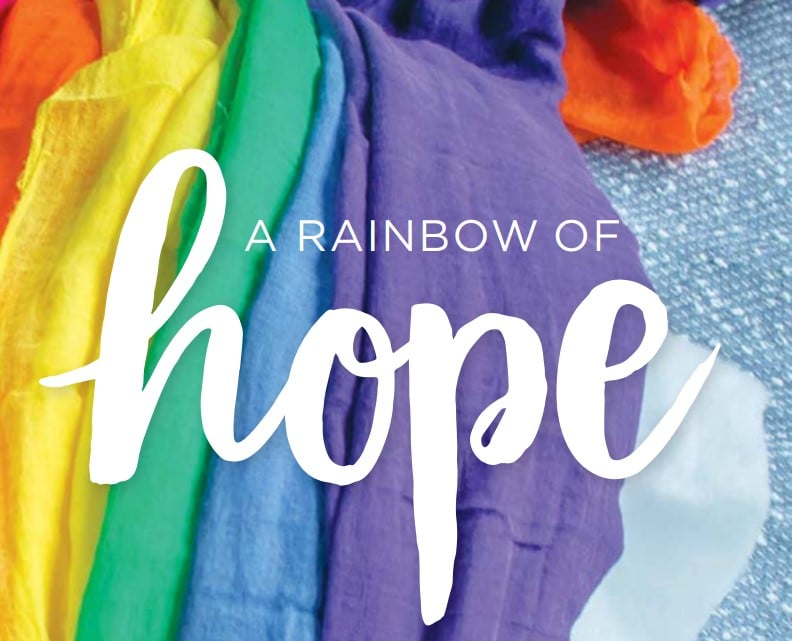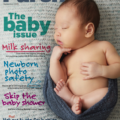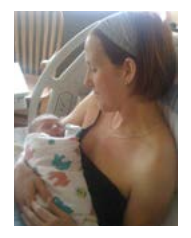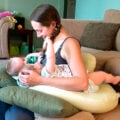Meghan Marrinan Feliciano was due to give birth to her third child, a daughter named Sybil, in July 2016. The pregnancy went smoothly, the baby reached full term and the hospital bags were packed.
She and her husband, Garrett, thought the early stages of labor had begun, but instead they received the devastating news that their baby no longer had a heartbeat.
“I remember when the midwife told us there was no heartbeat, I still didn’t quite comprehend/accept that the baby had died,” Feliciano said. “I really needed her to spell it out.”
An umbilical cord knot caused Sybil to be stillborn, forever redefining life for Meghan, Garrett, and their daughter, Josephine, nearly 5 at the time, and son, Harlan, almost 3.
Despite their shock and overwhelming grief, all four Felicianos — plus Meghan’s parents and Garrett’s brother and sister-in-law — gathered to hold Sybil and say goodbye while a remembrance photographer with Now I Lay Me Down to Sleep captured some of the moments on film.
“The hospital gave us as much time as we wanted,” Feliciano said. “We could have spent the night, but decided to be home when our older kids woke up in the morning.”
They had time to meet with a chaplain, too; they even put Sybil into pajamas and did their kids’ bedtime routine with a story, prayers and two favorite songs.
“Our family had one precious day as an almost-whole family,” Feliciano said.
The Feliciano family had a day to say hello and goodbye to baby Sybil, who was stillborn at full term.
Remembrance
This year, as the first anniversary of Sybil’s birthing day approached, the Felicianos asked friends and family to do random acts of kindness in honor of Sybil, and then send her a birthday card sharing the experience.
The resulting basket of cards grew day by day and gave the family something positive to focus on as they anticipated the difficult remembrance. On Sybil’s birthday, the Felicianos gathered in their St. Paul home to open the cards together.
Just weeks earlier, they had welcomed a new baby, Walter.
Josephine and Harlan ate birthday pie topped with one candle with a framed photo of Sybil propped beside them on their kid-sized table.
Newborn Walter slept snugly nearby in a bouncy chair.
Of the 1 million families in the U.S. who experience the loss of a pregnancy or infant, many conceive again. Between 50 and 80 percent of women who experience prenatal loss become pregnant again within 12 to 18 months.
Babies born after such tragic losses hold an extra-special place in most families’ hearts. There’s even a popular term for them — rainbow babies.
But the birth of another child doesn’t erase the impact of loss on the family, Meghan Feliciano said.
“While Walter is truly a rainbow of hope, and all three of our living children bring us joy every day, this does not mean our storm of grief has passed,” she said. “As I smile at Walter’s newborn quirks, my imagination has an easier time picturing Sybil, and missing her even more.”
Fear and courage
For Feliciano, it was hard to fully enjoy being pregnant again with Walter.
“We talked about the whole thing differently, using words like hope and if,” she said. “It was terrifying until the moment he came out.”
Subsequent pregnancies after loss can be emotional and even traumatic for parents. Grief, confusion, anxiety, guilt and fear are all common emotions. Even a routine ultrasound can trigger these feelings, bringing up memories of the pregnancy before this one.
Therapists specializing in grief and loss can be a benefit to the whole family. After all, children are far from oblivious, as Feliciano learned.
When Feliciano was pregnant with Walter, little Josephine voiced concerns similar to Feliciano’s own by saying, “I’m excited for the baby. But — after Sybil — I’m afraid.”
Harlan was a little more straightforward, asking on multiple occasions, “Is this baby gonna be dead, too?”
“They add another layer of how to parent them through grief,” Feliciano said.
Finding a local support group for mothers coping with the loss of a child — a Sisterhood of Loss group at Blooma in Minneapolis — offered some healing for Feliciano.
Many of the other grieving parents in her group ended up being pregnant with rainbow babies, too, adding another step in their journey to navigate together.
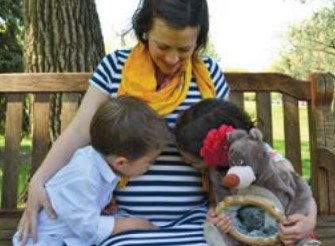
Meghan Marrinan Feliciano of St. Paul — with her children, Harlan and Josephine — experienced a wide range of emotions during her fourth pregnancy. Photo by Anna Ayers Looby
Rainbow babies
Kelly McDyre is the executive director of Faith’s Lodge, a retreat facility in Wisconsin offering programming for families coping with the death of a child. Seeing her clients return to Faith’s Lodge with their new babies is the most heartwarming part of her job.
For McDyre, the term rainbow baby implies that grief can coexist with joy.
“You can allow yourself to grieve and allow space in your heart to celebrate new life,” she said.
The origin of calling children rainbow babies is unknown, but it’s become a universal metaphor for a baby born after the loss of a previous baby, like a rainbow brightening the sky after a storm.
After a photoshoot of mothers in brightly colored dresses holding their rainbow babies went viral in 2016, the phrase gained widespread use.
“The term is one that is fairly recent, but very popular,” said McDyre, who sees the term as a way for parents to connect with others who have experienced loss.
But it isn’t popular with everyone, which she learned after an article reposted on the Faith’s Lodge Facebook page received negative comments.
Lindsey Henke, a licensed clinical social worker from Bloomington, founded Pregnancy After Loss Support (PALS) in 2014 after going through the experience herself. The online support group offers a way for people — even in rural settings or with limited schedules — to find that connection and community.
Henke has mixed feelings about the trendiness of the term.
She explains that some parents prefer their baby-to-be develop its own identity without a label of any kind. Others don’t like the implication that a rainbow makes everything better after the storm of grief.
“This baby is a separate baby, not a replacement for the one that passed away,” she said.
Her own rainbow baby, Zoe, was born 15 months after her daughter, Nora, was stillborn.
“We talk about Nora, but it’s important to keep Zoe as her own person, so she doesn’t live in Nora’s shadow,” Henke said.
Feliciano said she appreciates having a relatable term for new life after infant loss, but it runs the risk of coming off a bit too lighthearted or even “cutesie.”
“It doesn’t really do justice to the long-term complexities of grief/losing a child,” Feliciano said.
Since the term “rainbow baby” is so new, those bestowed the title have yet to reach preschool age. We don’t know yet how they’ll feel about their rainbow-colored childhoods.
But qualitative research by Joann O’Leary at University of Minnesota suggests that children born after loss understand grief and death at an early age. They’re also emotionally sensitive, empathetic and perceptive.
She considers these traits gifts from the siblings they never knew.
Creating cultural change
In previous generations, miscarriage and stillbirth were all but invisible in society, a burden families carried mostly alone.
The term rainbow baby is a step toward changing that by giving grieving parents a way to share their stories and connect with others who have experienced similar loss.
Big Bang Theory actress Melissa Rauch recently wrote an emotional piece about her previous miscarriage and current pregnancy for Glamour. Reality Star Jamie Otis openly talked about her miscarriage. Then in January, photos of a rainbow painted on her new baby bump received more than 62,000 likes on Instagram.
A Los Angeles psychologist started a popular campaign, #IHadAMiscarriage, which has sparked conversation on social media. She also launched a line of rainbow-baby themed apparel for moms and kids.
Legally, there have been changes, too. In 2005, Minnesota began offering birth certificates for stillborn babies. Beginning this year, the state of Minnesota became the fifth state to offer a one-time tax credit to parents who experience a stillbirth. Previously, there was almost no legal recognition for these children.

Kassy Kenney of St. Paul and her husband, Mike Adam — parents to Maeve, 22, Liam, 20, Emmett, 16 — suffered a stillbirth (a daughter, Sean) before Emmett was born. When asked, “How many children do you have?” Kenney responds: “Three on Earth, one in Heaven.”
Talking about loss
Eighteen years ago, Kassy Kenney of St. Paul was a part of making changes for other grieving families.
When she was six and a half months pregnant — and at the doctor for a routine ultrasound — she remembers the radiologist entering the room with the callous announcement: “Your fetus is unviable; we need to make a plan for termination.”
An emergency C-section followed to deliver her stillborn daughter, Sean.
Her living children, aged 2 and 4, were what got her out of bed during the foggy days of grief that followed.
“The love gets you through it,” Kenney said, remembering neighbors who dropped food off and friends who checked in on the family.
Determined to find positives amidst the tragedy, she went back to educate the hospital about the importance of sensitivity and comfort for parents who are grieving the loss of an unborn child.
“Be aware that from the moment of conception to birth, that’s their child,” she said. “Even if that’s not your belief, you have to be sensitive to that family.”
Feliciano said her midwives and nurses handled her daughter’s 2016 death with profound empathy and professionalism.
“Things are changing,” she said. “Our medical team acted with nothing but compassion as they shared the heartbreaking news of Sybil’s death, assisted me through labor, delivery and postpartum, and accompanied me through the ups and downs of Walter’s pregnancy and birth. I believe this treatment has had a huge impact on how Garrett and I have processed this tragedy — and welcomed Walter.”
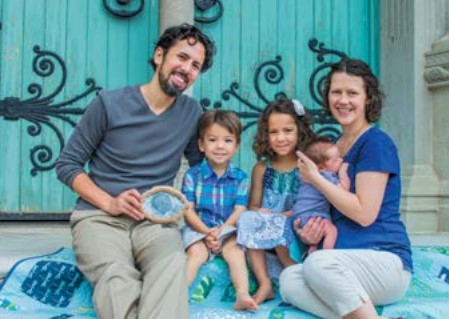
Earlier this year, the Feliciano family of St. Paul welcomed baby Walter, who carries the newly popular term of “rainbow baby” because he arrived after the tragic stillborn loss of his sister, Sybil. Photo by Amanda Nesgood / A. Nesgood Photography
What to say
Knowing how to talk about infant loss involves a bit of a learning curve for most people.
Even the innocent question, “How many children do you have?” is tough to answer.
After struggling for years with how to reply, Kenney now proudly says, “Three on Earth, one in Heaven.”
Her youngest child, Emmett, now 16, was born two years after losing her daughter, Sean.
“We have so many blessings,” she said. “This little angel in heaven, she will always be part of our family.”
Meghan Feliciano admits that despite her personal experience, even she isn’t always sure what to say to someone who is grieving.
But she does know that it’s OK to talk about the loved one who is gone.
She loves hearing Sybil’s name, “You don’t make me sad if you bring her up!”
Missing Grace Foundation, a Minnesota-based organization supporting families after loss, offers an online guide on what to say and do if someone you know is grieving the loss of a child.
It’s all right to admit that you don’t know what to do or say, and delayed acknowledgements can be better than none at all, the guide advises.
“It will get better,” Kenney tells other grieving parents. “Time does help, but it doesn’t make it go away. It’s like my C-section that left a scar. But I can live with the scar.”
Minnesota Parent’s Pregnancy Loss Resources:
A BED FOR MY HEART
Organized by Angela Miller — the author of You Are the Mother of All Mothers — this online support community is for anyone suffering from the loss of a child, at any age/gestation and from any cause of death. abedformyheart.com
BRIGHTER DAYS GRIEF CENTER
This newly established nonprofit organization offers support for those facing loss and resources for children who have lost a loved one. brighterdaysgriefcenter.org
CHILDREN’S MEMORIAL AND HEALING GARDEN
Located in Resurrection Cemetery in Mendota Heights, this garden is open to people of all faiths as a place of healing, prayer and reflection. catholic-cemeteries.org
COMPASSIONATE FRIENDS
Dedicated to helping every bereaved parent, sibling or grandparent, this national organization has local chapters throughout Minnesota. compassionatefriends.org
EXPECTING SUNSHINE
Published in April, this award-winning memoir tells the story of Alexis Marie Chute, who lost her son, Zachary, in her arms at birth — and her emotional journey through pregnancy again.
amazon.com
FAITH’S LODGE
This retreat center near Danbury, Wis., is for families who have lost a child — age 20 weeks or more gestation through 19 years — within the past three years. faithslodge.org
MISSING GRACE FOUNDATION
Based in Rogers, Minn., this organization offers support groups, care baskets and other services for families experiencing a miscarriage, stillbirth or neonatal loss. missinggrace.org
NOW I LAY ME DOWN TO SLEEP
Photographers with this group offer free on-call remembrance photography for families in Minnesota and around the world facing the untimely death of an infant. nowilaymedowntosleep.org
PALS
Founded by a Bloomington mother, Pregnancy After Loss Support is an online community-support resource that helps women choose hope over fear while nurturing grief during a pregnancy after a previous loss. pregnancyafterlosssupport.com
Abbie Burgess is a Twin Cities freelance writer and lifestyle blogger. Originally published July 2017.



